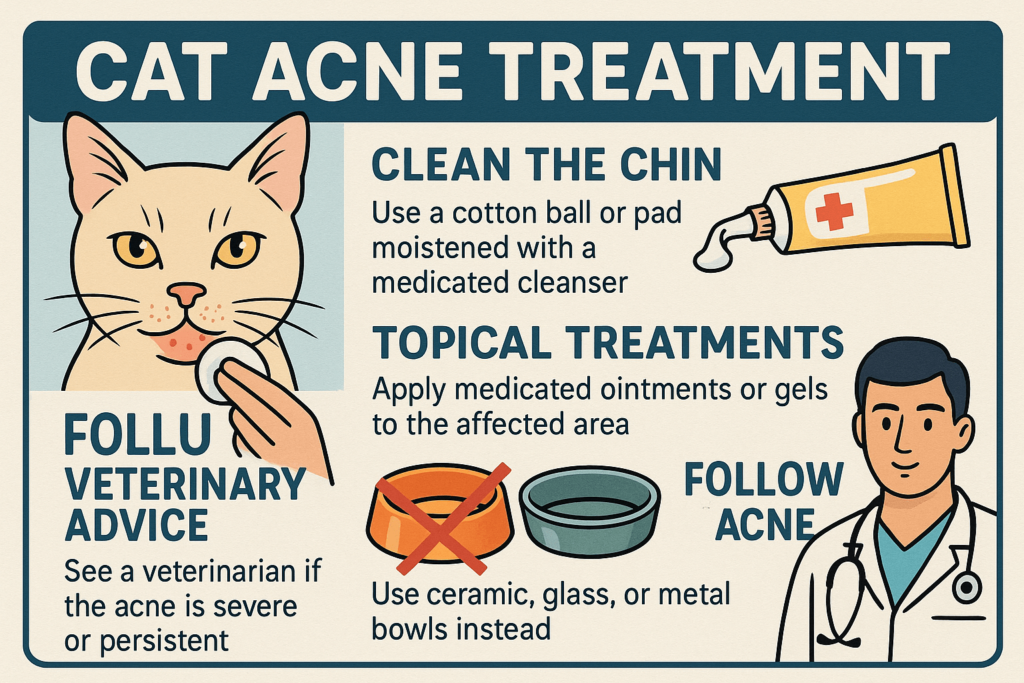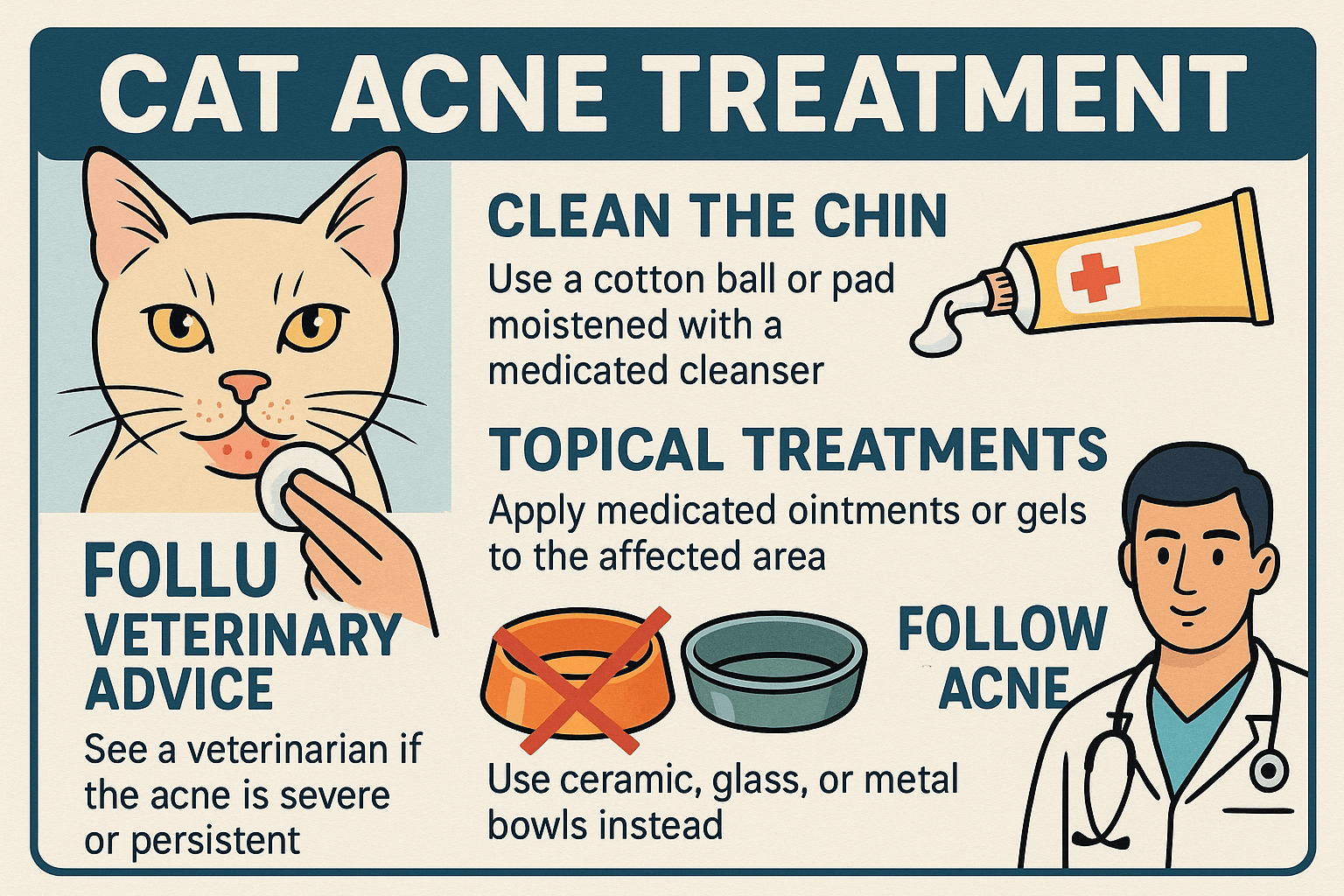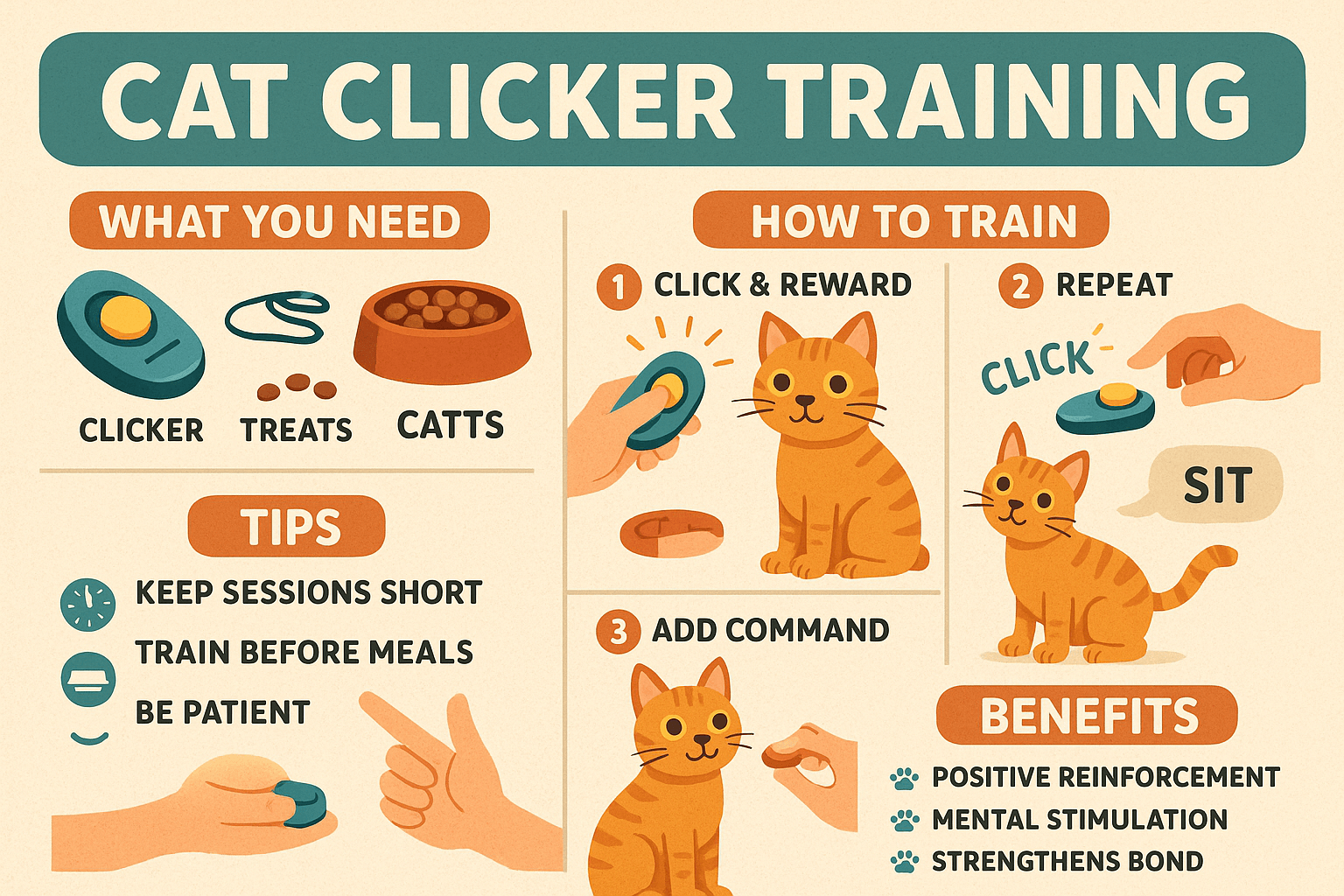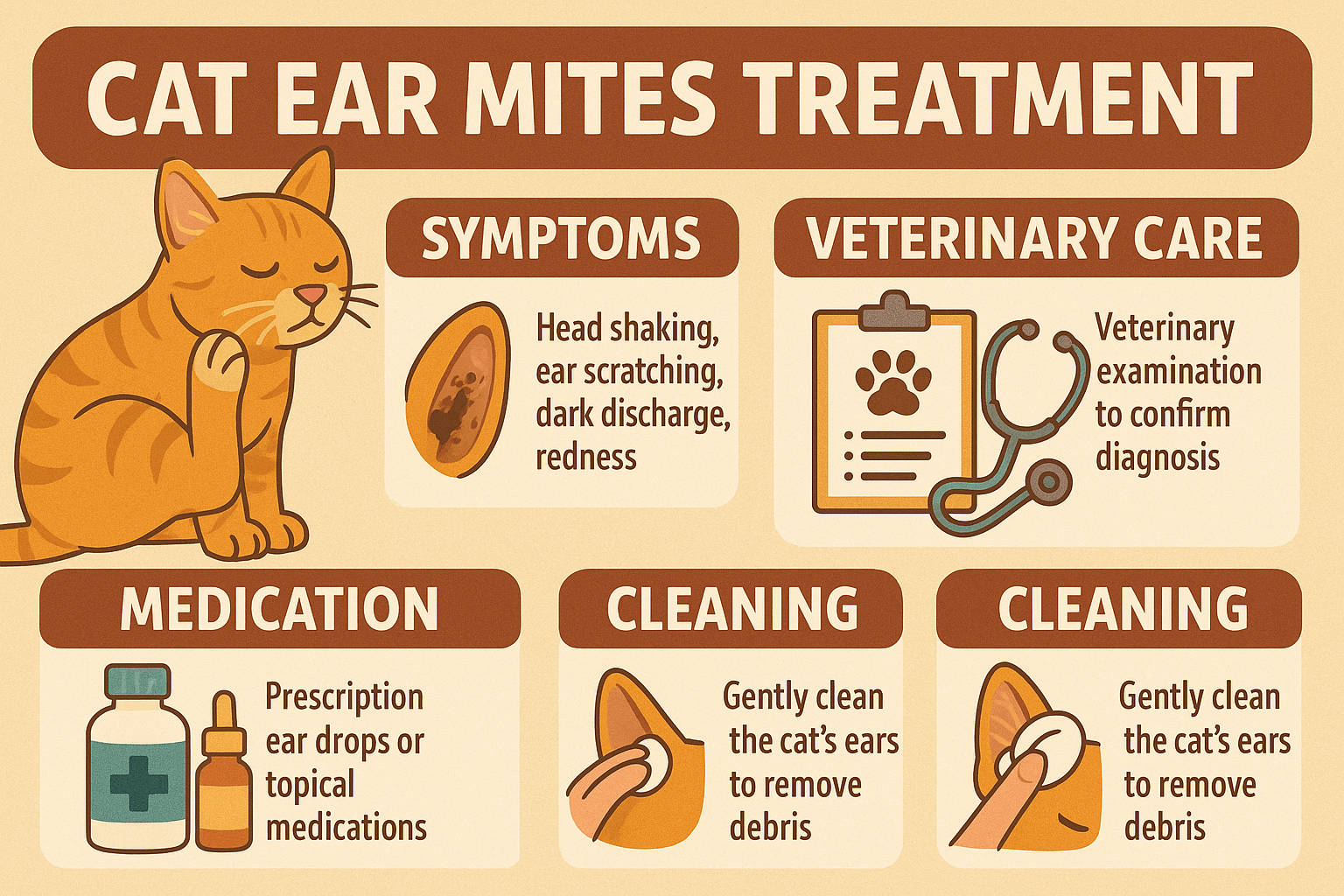Cat Acne Treatment: What You Need to Know
If you’ve noticed small black dots or red bumps around your cat’s chin, they might be dealing with a condition known as cat acne. While it may sound unusual, feline acne is relatively common and can affect cats of all ages and breeds. This skin condition often appears on the chin and lips, caused by clogged hair follicles and oil glands. Fortunately, with proper care and treatment, cat acne can be managed effectively. In this blog post, we’ll explore the causes, symptoms, and best practices for treating cat acne, ensuring your furry friend stays healthy and comfortable.
Understanding the Causes of Cat Acne
Before diving into treatment options, it’s important to understand what triggers cat acne. Identifying the underlying cause can help you address the issue more effectively and prevent future flare-ups.
Clogged Pores:
Just like humans, cats can experience clogged pores due to excess oil production, leading to blackheads and pimples.Poor Hygiene Practices:
Cats that don’t groom themselves properly or use dirty food bowls may be more prone to developing acne.Allergic Reactions:
Certain foods, plastics, or cleaning products can irritate a cat’s skin, contributing to acne outbreaks.Hormonal Imbalances:
Fluctuations in hormones can increase oil production, making some cats more susceptible to acne.Underlying Health Conditions:
Conditions like diabetes or immune system disorders can exacerbate skin issues, including acne.
By addressing these potential causes, you can take proactive steps to manage and reduce the severity of your cat’s acne.

Effective Treatments for Cat Acne
Treating cat acne requires a combination of hygiene, topical care, and sometimes veterinary intervention. Here are some proven methods to help your cat recover from acne and prevent recurrence.
Regular Cleaning of Affected Areas:
Gently clean your cat’s chin with a mild, pet-safe antiseptic solution or diluted chlorhexidine to remove dirt and bacteria.Switching to Stainless Steel Bowls:
Plastic bowls can harbor bacteria and irritate a cat’s skin. Stainless steel or ceramic bowls are safer alternatives.Using Medicated Wipes:
Specialized wipes containing salicylic acid or benzoyl peroxide can help clear up acne without irritating sensitive skin.Applying Topical Treatments:
Veterinarians may recommend medicated creams or ointments to reduce inflammation and promote healing.Prescription Medications for Severe Cases:
For persistent or severe acne, antibiotics or anti-inflammatory drugs may be necessary to address infections or swelling.
With consistent care and attention, most cases of cat acne can be resolved successfully, restoring your cat’s comfort and confidence.
Check this guide 👉Cat Acne on Nose: Best 7 Health Tips!
Check this guide 👉Witch Hazel for Cat Acne: Best 7 Health Tips!
Check this guide 👉Should You Pop Cat Acne? Best 7 Health Tips!
Preventive Measures for Cat Acne | Signs Your Cat May Have Acne |
|---|---|
Clean food and water bowls daily | Blackheads or dark specks on the chin |
Use stainless steel or ceramic bowls | Redness or swelling around the chin |
Regularly wipe your cat’s chin with a damp cloth | Crusty or scabby patches on the skin |
Avoid plastic toys or accessories | Excessive scratching or rubbing of the chin |
Maintain a balanced diet | Hair loss or irritation near affected areas |
How to Prevent Cat Acne Recurrence
Once your cat’s acne has cleared up, taking steps to prevent its return is essential for long-term health. These tips can help minimize the risk of future outbreaks.
Maintain a Clean Environment:
Regularly wash bedding, toys, and grooming tools to reduce exposure to bacteria and allergens.Monitor Diet and Nutrition:
Ensure your cat’s diet includes essential fatty acids, which support healthy skin and reduce oil buildup.Check for Allergies:
Identify and eliminate potential allergens, such as certain foods or household products, that could trigger acne.Establish a Grooming Routine:
Brush your cat regularly and wipe their chin after meals to keep it clean and free of debris.Schedule Regular Vet Check-Ups:
Routine visits to the vet can help catch early signs of acne or other skin conditions before they worsen.
By incorporating these habits into your routine, you can significantly reduce the likelihood of cat acne returning.
When to Seek Veterinary Help for Cat Acne
While mild cases of cat acne can often be managed at home, some situations require professional intervention. Knowing when to consult your vet ensures your cat receives timely and appropriate care.
Persistent or Spreading Lesions:
If the acne doesn’t improve with home care or spreads to other areas, it’s time to seek veterinary advice.Signs of Infection:
Pus, discharge, or foul odors indicate an infection that needs medical treatment.Excessive Discomfort or Pain:
Cats showing signs of pain, such as avoiding touch or excessive grooming, may need stronger medications.Changes in Behavior or Appetite:
A sudden change in eating habits or overall behavior could signal an underlying health issue linked to acne.Severe Swelling or Scarring:
Significant swelling or permanent scarring requires evaluation to rule out deeper skin problems.
Prompt veterinary attention can prevent complications and ensure your cat gets the care they need.
Common Mistakes to Avoid When Treating Cat Acne
Treating cat acne requires care and precision. Avoiding these common mistakes can speed up recovery and prevent further irritation.
Over-Cleaning the Area:
Excessive washing can dry out your cat’s skin and worsen acne. Stick to gentle, infrequent cleanings unless advised otherwise by your vet.Using Harsh Chemicals:
Strong cleaners or alcohol-based solutions can irritate your cat’s delicate skin. Opt for mild, pet-safe products instead.Neglecting Underlying Issues:
Focusing solely on surface-level treatment without addressing root causes, like allergies or poor hygiene, can lead to recurring acne.Skipping Vet Consultations:
Attempting to treat severe cases at home without professional guidance may delay proper healing.Forcing Treatments on Your Cat:
Struggling with an unwilling cat can cause stress and injury. Take breaks and try again later if needed.
Avoiding these pitfalls ensures a smoother and more effective treatment process.
Natural Remedies for Managing Cat Acne
Some pet owners prefer natural remedies to complement traditional treatments. These options can be gentle yet effective for mild cases of cat acne.
Coconut Oil:
Applied sparingly, coconut oil can moisturize dry skin and reduce inflammation—but avoid overuse, as it can clog pores.Aloe Vera Gel (Pet-Safe):
Aloe vera has soothing properties that can calm irritated skin. Ensure the gel is free of additives or fragrances.Green Tea Rinses:
Brewed and cooled green tea can act as a mild antiseptic rinse for your cat’s chin.Oatmeal Baths:
While full baths aren’t ideal for cats, a diluted oatmeal solution can soothe inflamed areas during spot cleaning.Dietary Supplements:
Adding omega-3 fatty acids to your cat’s diet can improve skin health and reduce oil production.
While natural remedies can help, always consult your vet before introducing new treatments.
Creating a Stress-Free Environment for Your Cat
Stress can exacerbate cat acne, so creating a calm and supportive environment plays a vital role in recovery.
Provide Quiet Spaces:
Ensure your cat has access to quiet, cozy spots where they can relax away from noise or disturbances.Maintain a Consistent Routine:
Cats thrive on predictability. Keep feeding, playtime, and grooming schedules consistent to reduce stress.Limit Exposure to Triggers:
Identify and minimize exposure to potential stressors, such as loud noises or unfamiliar pets.Encourage Play and Exercise:
Regular play sessions release endorphins, helping your cat feel happier and less anxious.Offer Comfort Items:
Familiar objects like blankets or toys can provide a sense of security during stressful times.
A peaceful environment supports both physical healing and emotional well-being for your cat.
Frequently Asked Questions About Cat Acne Treatment
Is cat acne contagious?
No, cat acne is not contagious to other pets or humans. It’s primarily caused by environmental or genetic factors.
Can I use human acne products on my cat?
No, human products can be harmful to cats. Always use pet-safe treatments recommended by your vet.
How long does it take for cat acne to heal?
Mild cases may resolve within a few weeks with proper care, while severe cases may take longer with veterinary treatment.
Will my cat’s acne come back?
With good hygiene and preventive measures, recurrence can often be minimized or avoided altogether.
Can diet affect cat acne?
Yes, poor nutrition or food allergies can contribute to acne, so providing a balanced diet is key.
Taking Control of Your Cat’s Skin Health
Cat acne may seem like a minor issue, but it can impact your cat’s comfort and quality of life if left untreated. By understanding its causes, implementing effective treatments, and adopting preventive measures, you can help your feline friend maintain healthy, acne-free skin. Remember, consistency and patience are key—cat acne often requires ongoing care to achieve lasting results. With love, attention, and the right approach, your cat can enjoy a happy, itch-free life.
Cat Clicker Training: Best 7 Expert Tips! Discover how to train your cat using clicker techniques, improve behavior, and strengthen your bond with simple, effective strategies.
Lorem ipsum dolor sit amet, consectetur adipiscing elit. Ut elit tellus, luctus nec ullamcorper mattis, pulvinar dapibus leo.
Cat Ear Mites Treatment: Best 7 Expert Tips! Discover effective solutions to treat and prevent ear mites in cats, ensuring your pet's comfort and health with expert advice.
Cat Acne Treatment: Best 7 Expert Tips! Discover effective remedies, prevention strategies, and expert advice to treat and manage feline acne for a healthier, happier cat.



